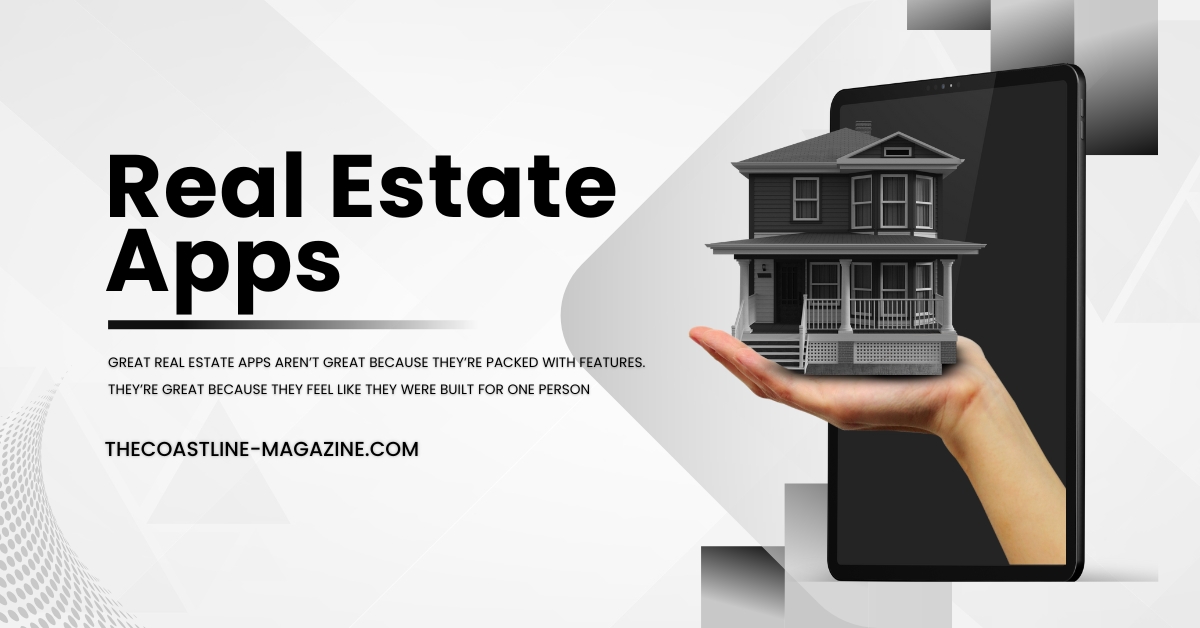The real estate world has moved from paper listings to pocket-sized platforms. In seconds, you can scroll through hundreds of homes, check prices, tour virtually, and message an agent—all from your phone. But with so many options on the app stores, which ones actually work?
Some apps look impressive but feel clunky. Others quietly become a daily habit. What sets them apart isn’t flashy features—it’s precision. The best real estate apps remove friction. They make finding, saving, comparing, and deciding feel effortless.
This article breaks down what the top-performing real estate apps get right—and what others miss entirely. Whether you’re a buyer, agent, or founder looking to build one yourself, this will show you where great apps begin.
Zillow, Redfin, Realtor: Familiar Names That Still Lead
Most people start their property search with the same three names: Zillow, Redfin, and Realtor.com. These aren’t just the most downloaded real estate apps—they’re also the most retained.
Each of them does something slightly different. Zillow leans into a lifestyle-driven search experience, offering visual maps, price estimates, and rental tools. Redfin combines its tech with real in-house agents, offering lower fees and market insights. Realtor.com focuses on speed and accuracy, often updating listings faster than its rivals.
But what unites them is consistency. They load fast, feel intuitive, and surface relevant listings without overwhelming the user. You don’t have to think twice about how to use them—they just work.
They’re not perfect, but they’ve mastered the fundamentals: search, save, compare, act. And that makes them hard to replace.
What Actually Makes a Real Estate App “The Best”
It’s easy to assume that great apps win because of brand size or marketing budgets. But if you strip away the logos, the apps that stay installed—the ones people return to again and again—share five key traits.
First, they’re fast. No one wants to wait for high-res images to load or watch a spinner after every filter. Second, they’re precise. Search results reflect what users asked for—not vague guesses. Third, they guide, not distract. Helpful nudges like “price dropped today” feel useful, not pushy.
Fourth, they keep users in control. A well-timed alert is welcome. A flood of irrelevant listings isn’t. And fifth, they adapt. Preferences are remembered, layouts feel familiar, and the experience improves the more you use the app.
The truth is, the best apps feel simple—but only because the hard work is hidden. They’re not just well-designed. They’re well-thought-through.
Features That Truly Matter to Users
Not every user needs AI-driven valuations or 3D staging. What they do need is far more basic—yet surprisingly rare.
Map-based browsing that’s responsive. Search filters that don’t reset every time you change a tab. Saved searches that notify you at the right moment, not days later. These are the small touches that turn casual users into daily ones.
Messaging features also matter. The ability to contact agents directly within the app—without switching platforms or filling out long forms—keeps the flow going. And let’s not forget visual clarity: photos that load quickly, floorplans that don’t require pinch-zoom acrobatics, and listings that don’t bury key details.
These might not make headlines. But when it comes to real estate app features, they’re what drive trust—and ultimately, transactions.
The Hidden Work Behind Great Apps
Users rarely think about what it takes to make an app feel effortless. But behind every smooth scroll and smart suggestion is a team that understood not just code—but context.
The best-performing apps didn’t get there by chance. They were shaped by people who knew the industry inside out—developers, product teams, and UX strategists who studied how agents work, how buyers search, and where the journey typically stalls.
This is where working with the right real estate app development company makes a difference. It’s not about writing code quickly—it’s about building platforms that mirror real-world behaviors. One wrong assumption in the flow, and user trust erodes fast.
Great apps aren’t just designed. They’re informed—by data, experience, and hard-won lessons from the field.
Are You Trying to Build an App Like Zillow?
For many founders entering PropTech, the blueprint seems obvious: build an app like Zillow.
But replicating Zillow’s interface is not the same as replicating its impact. Zillow didn’t win because it had more listings or prettier maps. It won because it solved a clear user problem—centralizing fragmented property data—and kept evolving with user behavior.
Trying to mimic its features without understanding that foundation leads to apps that look familiar but feel hollow. They have the search bar, the filters, the home values—but they don’t guide the user anywhere.
If you’re building in this space, don’t ask what Zillow has. Ask why it works—and whether your app solves a problem that still exists, or just follows a model that already peaked.
Where Most Apps Fail (And How to Avoid It)
Building a real estate app isn’t hard. Building one people actually use is.
Most failures come down to a handful of repeatable, fixable errors. Poor onboarding. Slow load times. Filters that don’t work. Notifications that feel random. These aren’t technical oversights—they’re lapses in empathy.
One of the most common real estate app mistakes is designing for a perfect use case: a tech-savvy buyer, on fast Wi-Fi, browsing with patience. Real users don’t fit that mold. They’re multitasking, switching apps, and making decisions fast.
Another red flag: too many features at once. In trying to do everything, many apps end up doing nothing well.
Avoiding these pitfalls isn’t about cutting corners. It’s about knowing what to cut—and what absolutely needs to stay.
Want to Build the Next Big One? Start Here
If you’re serious about building something users rely on, start small. Not small in ambition—but in scope.
Pick one task and solve it better than anyone else. Maybe it’s scheduling property visits. Maybe it’s filtering rental options with more precision. Maybe it’s just making the search results relevant. Whatever it is, do that exceptionally well before expanding.
Invest in real feedback early. Watch where users drop off. Where they pause. Where they hesitate. Then fix those things fast.
And don’t build in isolation. Talk to agents. Shadow buyers. Work with people who understand both product and property. Because in this space, domain expertise often matters more than raw engineering firepower.
You don’t need to reinvent the entire journey. You just need to remove the pain no one else has bothered to fix.
Don’t Just Copy. Understand. Then Build.
Great real estate apps aren’t great because they’re packed with features. They’re great because they feel like they were built for one person: the user.
They reduce stress instead of adding it. They work the way buyers think, not the way developers assume. And they don’t try to impress—they aim to disappear into the user’s workflow.
If you’re building in this space, don’t copy what others did. Understand why it worked. Understand the context, the timing, the behavior it addressed. Then build your version of that clarity—for a problem that still needs solving.
The market has enough apps. What it needs more of are thoughtful ones.

